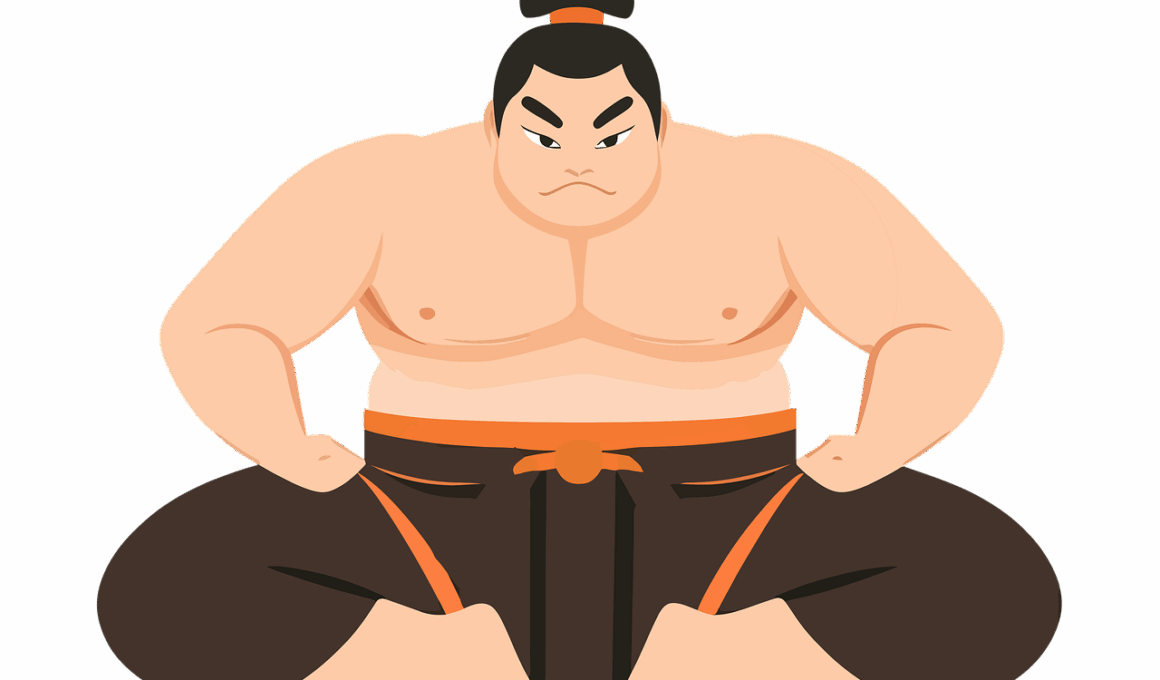Evaluating and Improving Wrestling Stance and Movement
In wrestling, the importance of an optimal stance cannot be overstated. A well-structured stance forms the foundation of successful movements and techniques on the mat. It is crucial for wrestlers to establish a solid base while remaining fluid enough to react. Dynamic movement arises from efficient stances, enabling athletes to shift weight easily and maintain balance effectively. Key characteristics of a strong stance include maintaining shoulder-width apart feet, bent knees, and an elevated center of gravity. Wrestlers should also be engaging their core to provide stability while performing advanced techniques. Foot placement and posture are essential; feet should be positioned properly with respect to the opponent. Practicing these stances should involve support from coaches who can provide detailed feedback. Training routines should also incorporate agility and flexibility drills to enhance responsiveness. The progression from a static to a dynamic stance is vital during sparring sessions. Regular evaluation ensures that a wrestler’s stance supports their individual style and strategic preferences. Coaches can implement video analysis to detect posture flaws and immediately correct issues, enhancing overall performance in wrestling matches.
To further develop an athlete’s wrestling movement skills, drills specifically targeting footwork and transitions should be emphasized. They should mimic realistic match situations, allowing for fluidity in motion while wrestling. This includes various lateral movements, quick pivots, and explosive bursts in direction. Incorporating agility ladder drills can be effective in improving foot speed and coordination over time. Additionally, practicing specific techniques, like takedowns and escapes, with authorized partners can enhance grappling movements. Wrestlers should focus on maintaining a low center of gravity while moving to maximize their stability during exchanges. Coaches can also encourage athletes to explore multiple styles, whether freestyle or greco-roman, as each discipline offers unique movement strategies. Engaging in cross-training can aid in learning diverse movement patterns, supplementing wrestling skills. Wrestlers must remain adaptive during bouts, and developing quick decision-making in movement will enhance their competitiveness. Feedback should be provided post-drill to highlight areas that need improvement. This continuous cycle of practice, feedback, and application in matches nurtures overall wrestling performance. When wrestlers commit to this approach, their stance and movement become swiftly reliable tactical weapons on the mat.
Importance of Core Stability in Wrestling Movement
Core stability emerges as a significant aspect of effective wrestling performance. A strong core serves as the central powerhouse that links the upper and lower body, facilitating well-coordinated movements. Wrestlers’ core muscles, which include the abdominals, obliques, and lower back muscles, need to be conditioned adequately for optimal support during physical exchanges. Engaging in specific core-strengthening exercises can enhance a wrestler’s ability to maintain firm control throughout various movements. Planks, medicine ball throws, and rotational movements are excellent additions to training routines. These exercises not only build strength but also improve balance and coordination, both critical for executing effective techniques. Furthermore, a stable core minimizes the risk of injury; wrestlers who neglect this area may experience strains or fatigue. Coaches should integrate core conditioning into practice sessions regularly, emphasizing how it impacts wrestling stances and movements. Increased core strength allows for greater agility and resilience, giving wrestlers an added edge during bouts. Thus, developing core stability results in heightened performance levels. Over time, athletes notice improved endurance and execution, enabling them to break free from unfavorable positions during matches.
In wrestling, feedback and assessment play crucial roles in an athlete’s development. Regular evaluation supports wrestlers in understanding their strengths and weaknesses, providing insights into their stances and movements. Coaches should establish a balanced approach between observations during practice and competition. Effective communication opens pathways for improvement suggestions and accolades, giving wrestlers the motivation they need to enhance their skills. Video analysis, as mentioned previously, stands as a powerful tool for assessment. It provides visual proof of areas needing focus and demonstrates progress made over time. Wrestlers can learn the movement discrepancies between their techniques and those of more experienced wrestlers. Additionally, engaging in peer feedback can foster camaraderie while supporting accountability. Peers can identify errors that coaches may miss due to their closer proximity. Thus, structured feedback sessions should be incorporated into training regimens regularly. Coaches should encourage self-assessment, allowing wrestlers to reflect on their performance critically. Ultimately, evaluation and feedback empower athletes to embrace continuous improvement, forging a growth mindset. It instills the importance of adaptability and responsiveness, shaping wrestlers into well-rounded competitors.
Incorporating Drills for Enhanced Movement
Wrestling techniques become significantly sharper through organized and focused drills executed during practice sessions. It is essential to identify and incorporate specific drills targeting stance and movement to develop a solid understanding of tactical positioning. Drilling the sprawl, for example, heightens a wrestler’s ability to evade opponents’ takedown attempts efficiently. Regular practice in executing this move not only sharpens timing but also conditions the body for agility. Additionally, mixing in partner drills fosters a sense of situational awareness during scrimmages. These partner drills can include not only engaging in takedown attempts but also escapes when applied in realistic scenarios. Another effective drill involves practicing quick, consecutive movements to emphasize explosiveness. This can include single-leg and double-leg drills, where quick response times are crucial. Coaches should also implement competitive situational sparring to encourage adaptability through transitioning between different stances. Effective repetition during practice reinforces muscle memory, ensuring that wrestlers can utilize these movements during actual matches. Integrating a blend of varying drills guarantees that wrestlers remain versatile and pursuit of improvement can continue without losing focus on essential technical details.
In wrestling training, mental preparation is often overlooked, but it significantly impacts a wrestler’s performance. Enhancing one’s mental acuity can contribute to sharper movements and better decision-making on the mat. Visualization techniques can be employed to mentally rehearse movements and scenarios wrestlers might encounter during bouts. This mental conditioning prepares athletes to execute kicks and transitions fluidly when competing. Emphasizing mindfulness and focus during training can decrease the likelihood of anxiety or hesitance during a match. Additionally, familiarity with opponents leads to improved strategic planning. Understanding rivals’ movements creates opportunities for counteracting techniques effectively. Coaches can incorporate discussions about mental strategies into practice sessions, allowing wrestlers to share insights or tactics. Preparing a pre-match routine aids in stabilizing nerves, building confidence, and improving overall performance. Wrestlers should also be encouraged to celebrate their achievements to foster a sense of self-efficacy, reinforcing their belief in their techniques and skills. This positive reinforcement supports a love for wrestling, thus making them more likely to put in the effort to improve stances and movements further. Ultimately, a strong mental game contributes significantly to physical execution during competition.
Review and Conclusion
Summarizing all aspects discussed, the development of stance and movement is paramount in wrestling. A proper stance directly influences an athlete’s ability to initiate movements effectively and maintain control during matches. Integrating relevant drills, physical conditioning, and mental preparation strategy leads to comprehensive growth. By continuously evaluating performance, piloting regular feedback sessions, and adjusting training routines, wrestlers will notice significant improvements. Engaging in drills that emphasize not only physical attributes such as agility and stability, but also mental ones can provide an overall preparedness that cannot be overlooked. Wrestling includes tactical thinking at its core; therefore, adapting movements based on opponents and situations becomes vital for any athlete looking to excel. An unwavering commitment towards refining stances, recognizing areas for enhancement, and practicing diligently bears fruit when executed consistently. Enhancing skills in wrestling is an ongoing journey; athletes should remain aware of their journey while constantly seeking growth and improvement. In conclusion, a multi-faceted approach in evaluating, practicing, and embracing the intricacies of wrestling positions and movements yields the most successful outcomes both on and off the mat.


